Spectacled Bear
- January 11, 2024
- 0 comment
The spectacled bear, scientifically known as Tremarctos ornatus, stands as a charismatic and unique inhabitant of the South American Andes. Easily recognizable by its striking facial markings, resembling eyeglasses, this medium-sized bear captures the imagination of nature enthusiasts and researchers alike. With a shaggy coat and a robust build, spectacled bears navigate the diverse ecosystems of the Andes, showcasing their adaptability to mountainous terrains and dense forests.

Known for their solitary nature, these bears primarily feed on vegetation, including fruits and berries, while occasionally supplementing their diet with small mammals and insects. Despite their elusive behavior, spectacled bears hold cultural significance in local folklore, symbolizing strength and resilience. However, their existence is increasingly threatened by habitat loss, poaching, and human-bear conflicts. Conservation efforts aim to protect these remarkable bears and their habitats, recognizing their vital role in maintaining biodiversity and ecological balance in the Andean region.
| Specification | Details |
|---|---|
| Scientific Name | Tremarctos ornatus |
| Common Name | Spectacled Bear |
| Habitat | Andean region of South America |
| Distribution | Venezuela to Bolivia |
| Size | Medium-sized |
| Weight | Males: 220–340 lbs (100–155 kg) |
| Females: 150–180 lbs (68–82 kg) | |
| Fur | Shaggy coat |
| Facial Markings | Resemble eyeglasses |
| Social Behavior | Generally solitary |
| Diet | Vegetation, fruits, berries, occasional |
| small mammals, and insects | |
| Lifespan | 20 to 25 years (wild) |
| Conservation Status | Vulnerable on the IUCN Red List |
| Main Threats | Habitat loss, human-bear conflicts, poaching |
| Importance in Ecosystem | Seed dispersal, ecological balance |
| Cultural Significance | Featured in local folklore and traditions |
| Unique Features | Excellent climbers with strong limbs |
| Distinctive adaptations for survival |
Spectacled Bears: Guardians of the Andean Wildernes
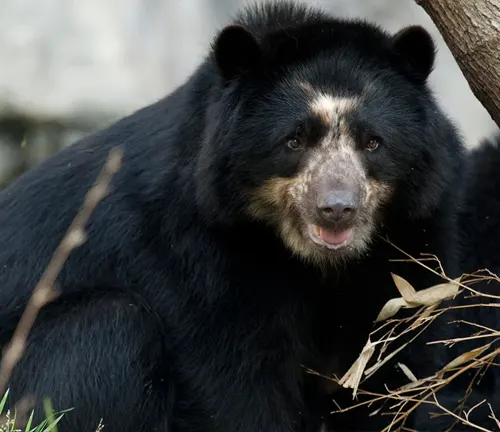
The Andean slopes are home to a remarkable creature, the spectacled bear (Tremarctos ornatus). With its distinctive facial markings resembling eyeglasses, this elusive bear has captivated the hearts of wildlife enthusiasts and researchers alike. Let’s delve into the unique world of the spectacled bear, exploring its habitat, behaviors, conservation status, and the challenges it faces.
The spectacled bear, also known as the Andean bear, is the only bear species native to South America. Its range extends from Venezuela to Bolivia, primarily inhabiting the dense forests and mountainous terrains of the Andes. Despite being South America’s only bear, it remains a mysterious and relatively lesser-known species.
Physical Characteristics
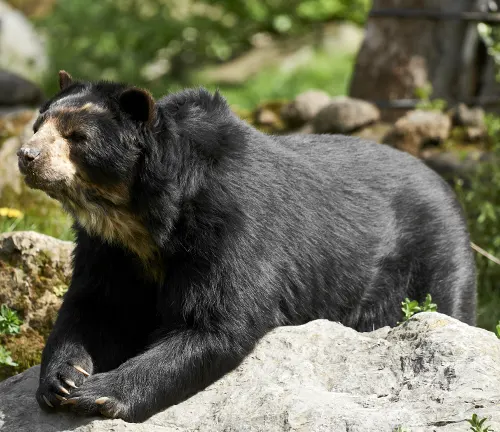
One cannot discuss the spectacled bear without mentioning its distinctive facial markings. These unique patterns, often likened to eyeglasses, vary among individuals, adding to the bear’s charm. Additionally, the spectacled bear is a medium-sized bear, with males being larger than females. Their robust build and shaggy fur contribute to their adaptability in the diverse ecosystems they inhabit.
Behavior and Lifestyle
Unlike some bear species, spectacled bears are generally solitary creatures. They navigate their territories with a combination of walking and climbing, showcasing their agility in the forested landscapes. Their diet primarily consists of vegetation, including fruits, berries, and various plant species. However, they are known to opportunistically consume small mammals and insects.

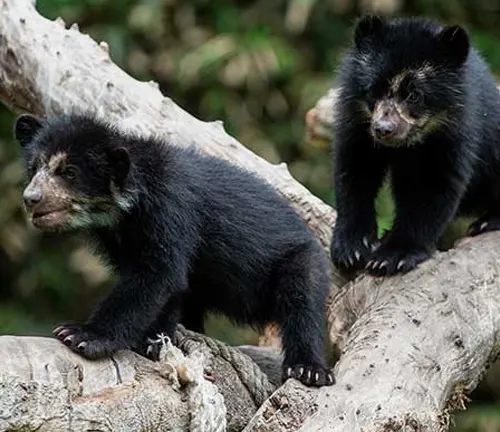
Conservation Status
Despite its intriguing characteristics, the spectacled bear faces numerous threats to its existence. Habitat loss due to deforestation, poaching, and human-bear conflicts have contributed to the species’ vulnerable status. Conservation organizations and governments across South America are actively engaged in initiatives to protect these bears and their habitats.
Importance in Ecosystem
Spectacled bears play a crucial role in maintaining biodiversity in the Andean ecosystems. Their foraging habits contribute to seed dispersal, aiding in the regeneration of plant species. Additionally, their presence in the food chain helps regulate populations of other species, contributing to a balanced ecosystem.
Human-Bear Conflict
The expanding human population in the Andean region has led to increased encounters between spectacled bears and local communities. Crop raiding and occasional conflicts pose challenges for both humans and bears. Conservationists are working on implementing strategies to mitigate these conflicts, such as secure waste disposal and community education programs.
Spectacled Bear in Popular Culture
Beyond the scientific realm, the spectacled bear holds significance in local folklore and traditions. Indigenous communities often incorporate the bear into their stories and ceremonies, portraying it as a symbol of strength and resilience. In modern times, media platforms are increasingly leveraging the bear’s image to raise awareness about conservation needs.
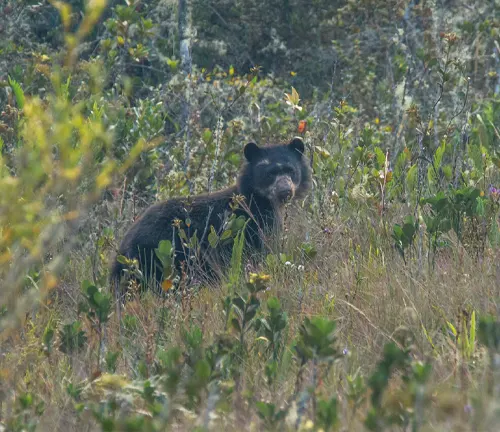
Research and Studies
Scientific research on spectacled bears is an ongoing endeavor. Researchers aim to unravel the mysteries of their behavior, reproductive patterns, and ecological roles. Recent studies have shed light on the adaptability of these bears to changing environmental conditions, providing valuable insights for conservation strategies.
Unique Adaptations
Spectacled bears exhibit unique adaptations that enable them to thrive in their challenging habitats. Their strong limbs and sharp claws aid in climbing trees, offering protection from predators. Additionally, their keen sense of smell assists in locating food sources in the dense forests they inhabit.
Challenges in Studying Spectacled Bears
Studying spectacled bears in the wild presents significant challenges. Their elusive nature and the rugged terrains they inhabit make direct observation difficult. However, advancements in technology, such as camera traps and satellite tracking, have revolutionized our understanding of these bears, allowing researchers to monitor their movements and behaviors more effectively.
Captive Breeding Programs
Captive breeding programs play a vital role in the conservation of spectacled bears. By maintaining genetically diverse populations in controlled environments, these programs act as a safety net against the threats faced by wild populations. Successful breeding efforts have contributed to the reintroduction of bears into protected areas.

The Threat of Climate Change
Climate change poses a growing threat to spectacled bear habitats. Changes in temperature and precipitation patterns can affect the distribution of the bear’s primary food sources. Conservationists are exploring adaptive measures to safeguard these habitats, including reforestation projects and the creation of wildlife corridors.

Encouraging Ecotourism
Balancing conservation with tourism is a delicate task. Responsible ecotourism initiatives aim to generate income for local communities while minimizing the impact on bear habitats. Guided tours and educational programs offer visitors a unique opportunity to witness spectacled bears in their natural environment, fostering a sense of appreciation and support for conservation efforts.
Personal Experiences and Encounters
Researchers and conservationists working with spectacled bears often share captivating stories of their encounters. These narratives provide a glimpse into the challenges and joys of working with these charismatic creatures. From tracking bears through dense forests to witnessing playful interactions, these experiences underscore the importance of preserving the spectacled bear’s unique place in the natural world.
Different Species
The spectacled bear, scientifically known as Tremarctos ornatus, is a singular species native to South America. There are no recognized subspecies or distinct varieties within the spectacled bear species. Unlike some other bear species that may have subspecies or regional variations, spectacled bears exhibit a remarkable degree of uniformity in their physical characteristics and genetics across their range. Therefore, the spectacled bear is considered a monotypic species with no recognized different species or subspecies.

Frequently Asked Questions (FAQs)
- Where do spectacled bears live in the wild?
Spectacled bears inhabit the Andean region of South America, ranging from Venezuela to Bolivia, with diverse habitats including forests and mountainous terrains. - How long do spectacled bears typically live in the wild?
In the wild, spectacled bears have an average lifespan of 20 to 25 years, though this can vary based on factors such as environmental conditions and human interactions. - Do spectacled bears have any natural predators?
Adult spectacled bears have few natural predators, with the main threats being humans and occasionally larger carnivores such as jaguars. - How many cubs do spectacled bears typically have?
Spectacled bears usually give birth to one or two cubs, with the mother providing care and protection during their early years. - What is the role of spectacled bears in their ecosystem?
Spectacled bears play a crucial role in maintaining biodiversity by contributing to seed dispersal and regulating populations of other species in the Andean ecosystems. - Are spectacled bears endangered?
Yes, spectacled bears are listed as vulnerable on the International Union for Conservation of Nature (IUCN) Red List due to habitat loss and human-bear conflicts. - How do researchers track the movements of spectacled bears in the wild?
Researchers use advanced technologies such as GPS collars and camera traps to monitor the movements and behaviors of spectacled bears in their natural habitats. - Can spectacled bears climb trees?
Yes, spectacled bears are excellent climbers. Their strong limbs and sharp claws allow them to climb trees, providing them with protection from predators and access to food. - Do spectacled bears communicate with each other?
Spectacled bears use vocalizations, body language, and scent marking to communicate, especially during the mating season and to establish territory. - Q: How are spectacled bears different from other bear species?
A: Spectacled bears are the only bear species native to South America. They are characterized by their unique facial markings and have adaptations suited to their Andean habitats. - Q: Can spectacled bears swim?
While not known for their swimming abilities, spectacled bears can swim and may do so to cross rivers or reach food sources on the opposite bank. - Are there any cultural myths or legends associated with spectacled bears?
Yes, indigenous communities in the Andean region often incorporate spectacled bears into their folklore and traditions, portraying them as symbols of strength and resilience. - How do spectacled bears cope with changes in their environment due to climate change?
Spectacled bears face challenges as their habitats change. Conservationists are exploring adaptive measures, such as creating wildlife corridors and promoting reforestation. - Q: Are there rehabilitation programs for injured or orphaned spectacled bears?
A: Some conservation organizations run rehabilitation programs to care for and release injured or orphaned spectacled bears back into the wild. - Q: Are spectacled bears nocturnal or diurnal?
A: Spectacled bears are primarily diurnal, meaning they are active during the day. However, their activity patterns can vary based on local conditions and human disturbances.


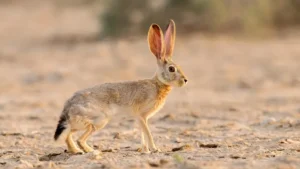
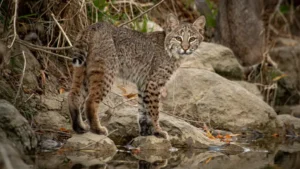
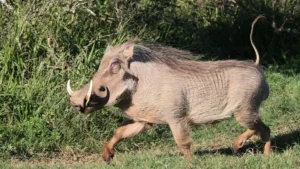








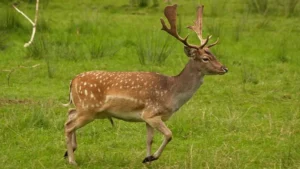
Leave your comment